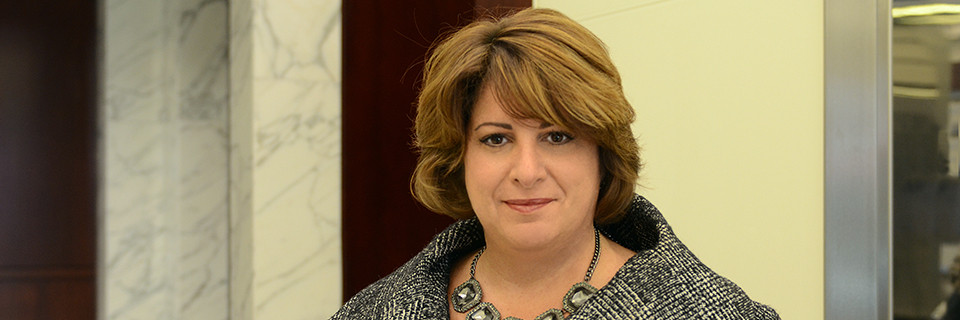On July 25, 2016, the U.S. Small Business Administration published its long-awaited final rule implementing a Small Business Mentor-Protégé Program. This program is in addition to and not a substitute for SBA’s existing Section 8(a) Mentor-Protégé Program. SBA’s existing Section 8(a) Mentor-Protégé Program is limited to Section 8(a) concerns which are companies that are socially and economically disadvantaged. SBA’s Small Business Mentor-Protégé Program is open to all small businesses including Women-Owned Small Businesses, Service Disabled Veteran-Owned Small Businesses and HUBZone businesses. While the Small Business Mentor-Protégé Program is distinct from the Section 8(a) Program, it is modeled on the Section 8(a) Mentor-Protégé Program. In addition to establishing a new Small Business Mentor-Protégé Program, the new rule includes changes to both the Section 8(a) and HUBZONE programs. These changes are also discussed below.
The key aspects of the SBA’s new Small Business Mentor-Protégé Program are as follows:
- Applications for the Small Business Mentor-Protégé Program will be directed to a special unit within the SBA’s Office of Business Development. SBA will start accepting applications October 1, 2016. While in the proposed rule SBA indicated it might impose “open” and “closed” periods for application processing, SBA has not adopted this approach in the final rule. SBA requires applicants to register in the System for Award Management and go through training before submitting an application. Applications are to be submitted through SBA’s web portal: certify.sba.gov.
- Mentors must be “for profit” entities and can be any size. Mentors may also be Protégés. Mentors can have up to three Protégés across the 8(a) and Small Business Protégé Programs but must first demonstrate that each additional agreement will not hinder the development of the Protégé under a prior agreement. For example, a second Protégé should not be a competitor of the first Protégé.
- Protégés must be small under their primary NAICS code but a Protégé may be able to secure a Mentor-Protégé Agreement under a secondary NAICS code if the Protégé has done business under that NAICS code. A Protégé may only have two Mentors at one time as long as the second Mentor-Protégé relationship is in a secondary NAICS code or provides specific assistance not provided under the Protégé’s first Mentor-Protégé relationship.
- Mentor-Protégé Agreements will have a term of three years, but can be extended for an additional three years.
- All Joint Venture agreements must be in writing. If a Joint Venture is a separate legal entity such as a limited liability company or a corporation, the Joint Venture must be “unpopulated.” This means the Joint Venture cannot have its own employees other than a few administrative employees. The Joint Venture must be registered in the System for Award Management and must have a separate DUNS number and CAGE code. Agencies must now credit the past performance of the Joint Venture members to the Joint Venture rather than expecting the Joint Venture itself to have a past performance history.
- Other agency Mentor-Protégé programs may continue for one year after the effective date of SBA’s new rule (August 24, 2016). Except for the DoD Mentor-Protégé Program, all other programs must have SBA’s approval to continue past the one year. A Mentor-Protégé relationship from a non-SBA program may be transferred to the SBA’s Small Business Mentor-Protégé Program under certain conditions. Specifically, the Protégé must demonstrate that the Mentor will provide different assistance under the new Mentor-Protégé Agreement or that it will provide assistance that had not yet been provided under the original Mentor-Protégé Agreement.
The new rules also made changes to the Section 8(a) Program, the highlights of which are:
- An applicant to the 8(a) Program who is not part of a group that the regulations presume are socially disadvantaged must make a stronger showing of “social disadvantage”.
- An applicant no longer must submit IRS Form 560T.
- The requirement for a written narrative demonstrating “economic disadvantage” has been eliminated.
- The new rule provides that the management experience that must be demonstrated by the owner of a Section 8(a) concern does not need to relate to the concern’s primary NAICS code.
- Applications must now be filed electronically and the requirement of a “wet signature” no longer exists.
- SBA is no longer required to refer an application to the SBA’s Office of Inspector General in every instance where an application presents evidence of possible criminal conduct.
- The new rule allows SBA to change the primary industry classification listed in a Section 8(a) concern’s business plan where the greatest portion of the firm’s total revenues during a three-year period has evolved from one NAICS code to another. SBA will inform the concern of its intention and the concern will have the opportunity to argue for keeping the original NAICS code as its primary NAICS code.
- 8(a) concerns may suspend their participation in the program under two new circumstances: (1) where the concern’s principal office is in an area declared a major disaster area and (2) where there is a lapse in federal appropriations.
The new rules also made changes to the HUBZone Program, the highlights of which are:
- SBA will issue a decision on HUBZone applications within 90 calendar days after receipt of a complete application package “whenever practicable.”
- SBA may draw adverse inferences from incomplete or missing information in the package that has been requested by SBA.
- An applicant must be eligible for the HUBZone program not only on the date it submits its application but also up to and including the time SBA issues its decision on the application. Any changed circumstances occurring after submission of the application must be disclosed.
- HUBZone businesses may now joint venture with other small businesses or with a large business Mentor under the new Small Business Mentor-Protégé Program.

